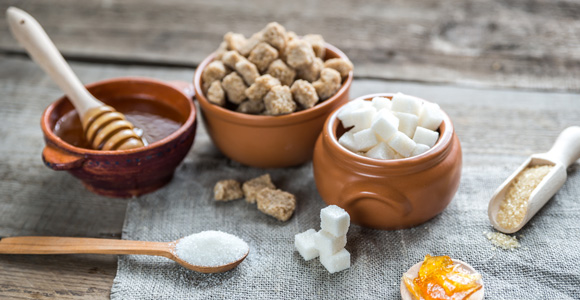What is blood sugar?
Blood sugar is the glucose, a type of carbohydrate, in your blood. Glucose is an important source of energy, particularly for our nervous system, and preferred energy source for physical activity. Your body usually keeps blood sugars within a specific range to support optimal health.
From food to fuel
Let’s use a food example – When you eat carbohydrates, say a slice of bread, you digest long chains of carbohydrate to smaller molecules called glucose. Glucose is absorbed into the blood for transport to other areas of your body.
Once glucose reaches its destination (Ex. a muscle, brain, or liver cell) it needs to get inside. The way it does so is via a hormone called insulin. A classic analogy is that insulin acts like a key to the cell, allowing the glucose to get out of the blood, and inside the cell for energy or storage.
What is Prediabetes?
Prediabetes is a serious health condition where blood sugar levels are higher than normal, but not high enough to be diagnosed as Type 2 Diabetes. This is a critical stage for dietary and lifestyle intervention.
In Prediabetes, either your body is not producing enough insulin, or, the insulin is not working as well as it should. This metabolic defect will result in high blood sugars, which over time if not addressed, can lead to long term health complications.
What can we do to prevent or manage high blood sugar?
There are several modifiable and non-modifiable risk factors that can contribute to high blood sugars. Non-modifiable risk factors include age, ethnicity, and history of Gestational Diabetes. We cannot control these factors.
The modifiable one’s are those that we have some control over, such as diet and lifestyle. Naturally, dietary intervention is one of the most important modifiable risk factors to consider, and is discussed in the following section.
Also, modest weight reduction can help. Results from the Diabetes Prevention Program study showed that reducing body weight by just 5% to 7% and increasing physical activity to 150 minutes per week could reduce the risk of developing Type 2 Diabetes in at-risk individuals.
How can nutrition help?
How you manage the amounts, types, and timing of carbohydrates will impact how your body manages blood sugar. Below are some tips:
1. Identify sources of carbohydrates. Examples of carbohydrate-containing foods are: Grains, fruits, starchy vegetables, nuts and seeds, dairy products, and simple sugars found in sweets and processed foods.
2. Identify the amount of carbohydrates you have at meals and snacks. As you can see above, a simple meal may have many sources of carbohydrates, so it is important to quantify total amounts as you strive for balance. There are strategies, such as carbohydrate counting and reading nutrition labels that can help you estimate portion sizes.
3. Choose complex carbohydrates most often. Complex carbohydrates are found in whole foods. They digest slower, allowing your body to process blood sugar more efficiently. Simple carbohydrates do not require much digestion, and are absorbed quickly into the blood. The latter should be minimized or avoided altogether.
4. Pair carbohydrate-containing foods with whole food sources of protein and fibre.Protein and fibre are two nutrients that can slow down digestion of carbohydrates. This results in a slower rise in blood sugar levels, and more efficient processing of blood sugar by your body. Pair these nutrients to create balance in your meals and snacks. As a bonus, many carbohydrate containing foods, such as legumes, are also great sources of protein and fibre.
What else can help?
Physical activity can also help with blood sugar management. For example, it improves insulin sensitivity, and can assist in weight management. Even a light walk before or after supper can help your body manage blood sugar more efficiently.
Hidden sources of added sugar
Nutrition label and ingredient list reading is an important skill for dietary management of high blood sugars. For example, there are many “hidden” names for simple sugars on ingredient lists, such as: Agave syrup, barley malt, brown rice syrup, corn syrup, honey, sucrose, lactose, fruit juice concentrate, dextrose, glucose, molasses, maple syrup, maltose, maltodextrins, others. With so many hidden names for sugars, choosing whole foods more often than processed is a simple strategy to reduce simple sugars in your diet.
Should you cut carbs out of your diet?
No. It is really about balance, variety, and moderation. Carbohydrates are your body’s primary fuel source, and is the preferred fuel source by your nervous system, and in physical activity. Self-education on blood sugar management in collaboration with your local Preventous RD can help you find the right balance!
Going further towards disease prevention
Ultimately, the goal of nutrition education in Prediabetes is to help control blood sugars. But the dietary and lifestyle recommendations associated with reducing risk of Diabetes are very similar to those in weight management, as well as prevention of many other chronic diseases including obesity, heart disease, kidney disease, and cancer.
Putting it all together as it relates to your diet and lifestyle can be challenging. Working with a dietitian can help simplify this process. I provide education on many aspects of Diabetes prevention and management and weight management. Getting started with a simple appointment is a first step to preventing or better managing Diabetes. If you would like to optimize your health through nutrition, reach out today to book an appointment! Call or text 403.229.0129 or email me here.
Dan Neuman
Registered Dietitian MSc


